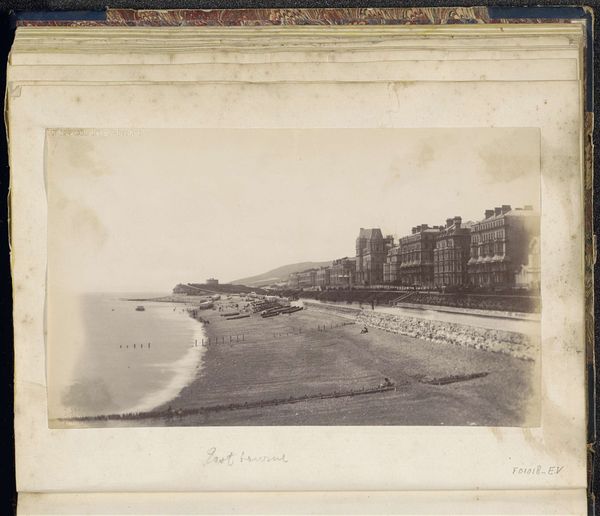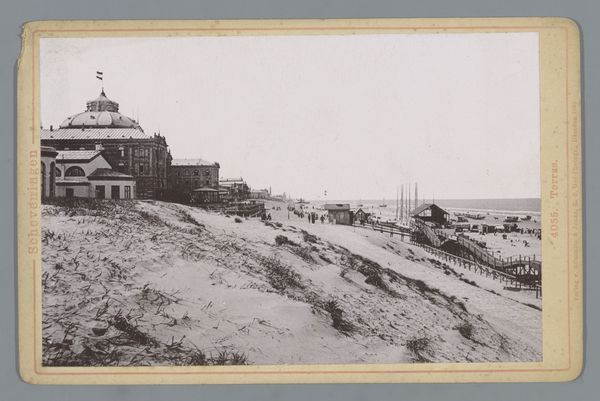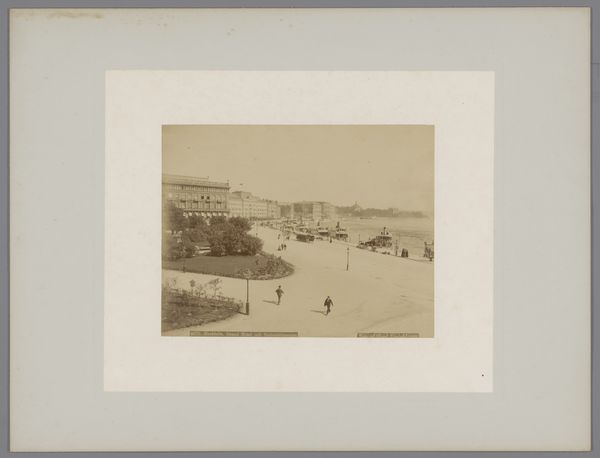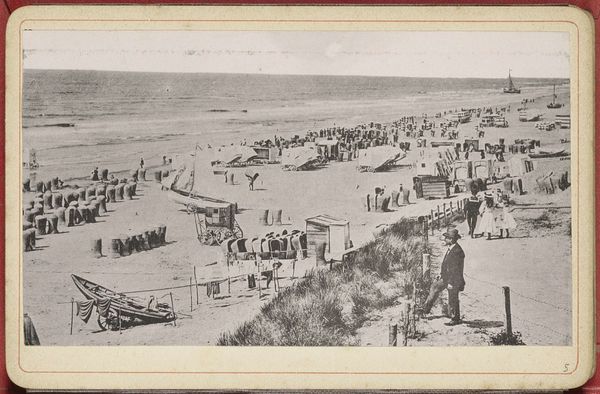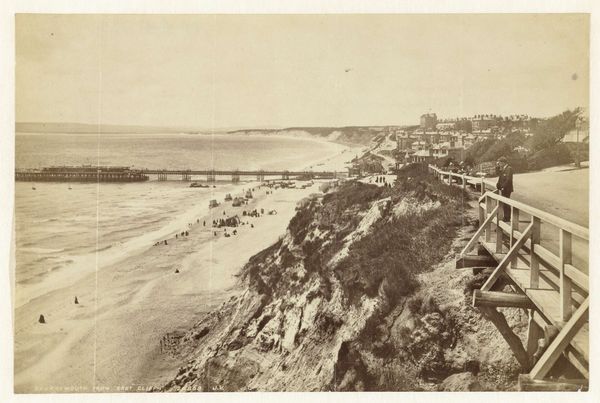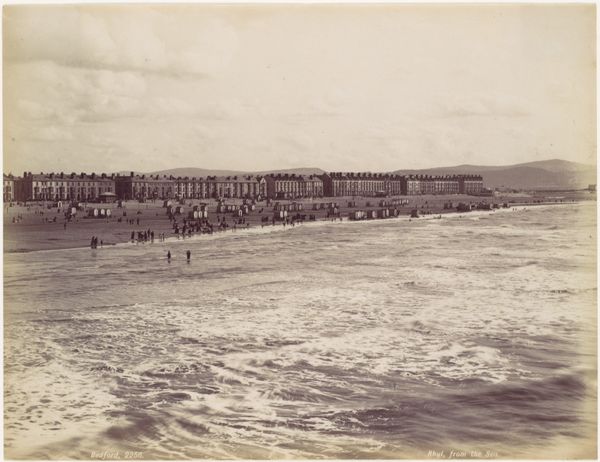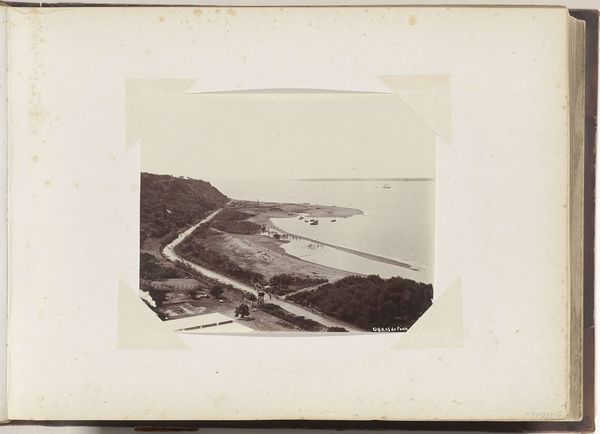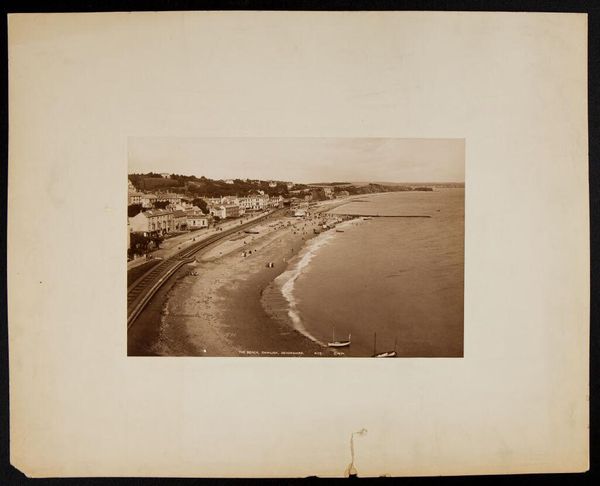
Gezicht op strand van Zeeland met zeeweringen en kleedhokjes 1850 - 1900
0:00
0:00
carlwilhelmbauer
Rijksmuseum
#
aged paper
#
pale palette
#
water colours
#
muted colour palette
#
white palette
#
unrealistic statue
#
muted colour
#
watercolour bleed
#
watercolour illustration
#
watercolor
Dimensions: height 105 mm, width 164 mm
Copyright: Rijks Museum: Open Domain
Curator: This is a photograph titled "Gezicht op strand van Zeeland met zeeweringen en kleedhokjes", or "View of a Zeeland Beach with Breakwaters and Bathing Huts" in English. The artist, Carl Wilhelm Bauer, captured this scene sometime between 1850 and 1900. It's part of the Rijksmuseum collection. Editor: It has a distinctly wistful feel. The muted sepia tones give it the patina of memory. The repeating lines of the breakwaters create a kind of solemn rhythm. Curator: The photograph does convey a feeling of solemnity. These lines aren't just aesthetic; they symbolize humanity's continuous negotiation with the sea, a dialogue of defense and vulnerability that shapes Zeeland’s identity. Editor: Precisely. And if we look closely at the bathing huts—an early form of beach infrastructure—we are observing the dawn of leisure as a socially stratified experience. These aren’t simply places to change; they are sites of visibility and privacy, privilege, and social display. Who has access? What bodies are deemed acceptable? Curator: I agree, there's a sociological commentary embedded. Beyond that, I find the photograph rich in symbols of transition. The breakwaters, in particular, point towards stability and permanence while the figures are fleeting. Editor: I wonder what Zeeland meant as a site of symbolic projection during this period, politically. Was this ordered vista designed to convey control, or was the intent to demonstrate the Netherlands' connection with water? What tensions do you think that may have represented? Curator: That is an astute observation. This scene reflects the Netherlands' mastery of its coastal environment but it does pose tensions between preservation, access, and class. These were all pressing political topics. Editor: I think this photograph shows the history of leisure being developed right before our eyes, complete with both liberation and oppression. Curator: And that's the true power of a seemingly simple image: its ability to hold these complexities within its frame. Editor: A beautiful, if somber, reminder that every snapshot contains multiple stories—histories of human endeavor and our changing relationships with nature.
Comments
No comments
Be the first to comment and join the conversation on the ultimate creative platform.
